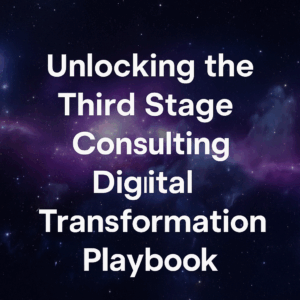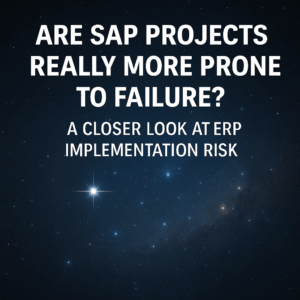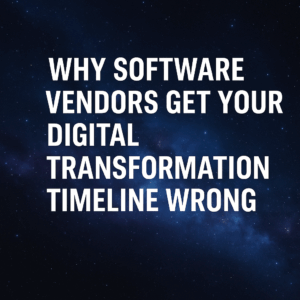Once upon a time, companies only had the option to host their digital software elements on their own server. The on-premise software was the only option, leading companies to host ERP, CRM, HCM, and WMS systems on their own servers. The great thing about this was the level at which each component within the corresponding systems could be customized. From the integration points between each software to the code within the software themselves, companies could fine-tune the functionalities of their systems to accomplish exactly what they needed.
The downside of fine-tuning each element of your on-premise software was the dating that came with it. The more customizations made to a software solution, the harder it became to update each element of the system. Over time, the customizations would make it difficult to unplug one system and replace it with a newer one because all customizations were made to fit the original software. With that, the introduction of cloud-based software was welcomed with open arms.
Today, ERP cloud software has simplified many of these exact issues that on-premise solutions pose. However, the trade-off is that the days of true customization, as we once had it, are being cut short in order to maintain the true nature of cloud computing.

Table of Contents
ToggleCloud Code
When implementing cloud software into your operations, you are opting into a ‘one-size fits all’ type of solution. You are opting into a multi-tenant software, sharing the platform with all the other companies that are utilizing the same solution. The software vendor simply separates each user by creating walls between each user or client, but overall, the experience is the same.
With that said, each company utilizing the cloud solution is utilizing the same code.
The Bright Side: The software vendor will regularly be pushing out updates to the whole platform, including each unique user. You and your team will always be working on the most updated version of the software.
The Dark Side: You do not own the code, and as a result, you cannot customize the platform to fit your needs. You lose the flexibility of fine-tuning the software to accommodate your company’s specific attributes, and instead, you fit your company into the software. If you are a company that prides itself on doing things differently, going the cloud-route could potentially cause you to compromise your company’s differentiators in the market.
Integration Points
Although you cannot customize the actual code in cloud-based software like you can in an on-premise solution, you can still customize the integration points. Say you have multiple systems talking to each other, a CRM and an ERP system, for example. The integration point that connects the CRM and the ERP software can be customized. However, that’s the extent of customizations when it comes to cloud-based solutions.
The Bright Side: This offers you the ability to make your systems correspond and collaborate in a unique way.
The Dark Side: Every time one of the cloud vendors updates its platform, your integration points need to be updated as well.
IPAAS
An emerging market within this industry is in the Integration Platform As A Service (IPAAS) space. If coding and managing your integration points is not something your team wants to do in-house, you can buy integration points between your systems instead. That way, you have a dedicated team that is managing the updates to each of your integration points.
The Bright Side: You don’t have to worry about keeping up with your integration points.
The Dark Side: Your integration point is now dependent on somebody else. Incorporating yet another player into your system operations can get costly very quickly, especially if you choose to use IPAAS for multiple integration points.
At the end of the day, choosing between on-premise and ERP cloud solutions comes down to the trade-off of maintaining customization capabilities or staying up to date with the most recent software and security updates. In most cases, the on-premise ERP can be customized to fit your company like a glove, while an ERP cloud software will make sure your software is staying updated and relevant no matter the time that passes. It’s important to consider your company’s specific needs and implement solutions that accommodate those needs in order to maximize your operations.
If you would like to discuss your company’s attributes in detail to see which route might be the best fit for you, feel free to contact me directly. I’m happy to be a sounding board as you begin exploring your digital transformation options.





